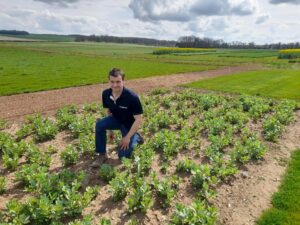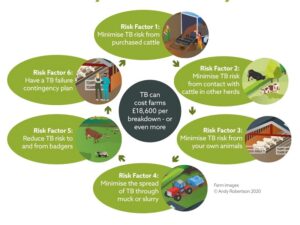
Little changes can make a big difference to productivity, according to speakers at the British Pig & Poultry Fair.
With margins under tremendous pressure, it is more important than ever to keep tight control over costs, performance, and animal health, whether in the pig, poultry or egg sectors. So what were the forum speakers’ top tips?
Daniel Dring at PD Hook said the main focus was planning ahead, getting the poultry sheds clean, warm and well-prepared before the chicks arrived. “It’s crucial to get the chicks off to a good start so we spend a lot of time trying to get the water sanitation right,” he said. “Tip the chicks straight onto the feed and check for crop fill – just sitting and observing your chicks pays huge dividends.”
New technology could really help producers, including choosing the correct light spectrum for the birds, and time-lapse photography to monitor their behaviour. However, according to David Speller from Applied Poultry, you don’t have to be a technological whizz to make use of the technology. “I believe somebody who is naturally good with animals isn’t always naturally good with technology.” Outsourcing that work to a remote expert could be a better option.
Pig producer Simon Watchorn agreed. “You have to make decisions from a position of knowledge – don’t just record for the sake of recording. At the moment it’s all about herd monitoring but I suspect it won’t be long before we can monitor and treat individual pigs.”
Stephen Tuer, who has expanded his indoor pig herd considerably, said using modern technology was critical when managing a larger number of pigs and employees. “Our staff enter everything onto a mobile, and it’s in the cloud giving me real-time information whenever and wherever I want it.”
According to Ade Adebiyi, ABN poultry nutritionist, producers could improve performance and reduce their dependence on soya by using a mix of protein sources. “Soya contains anti-nutrients like poorly digestible fibre, so replacing some of the soya protein with different protein sources improves gut health and potentially reduces the need for antibiotics,” he said. Super-dosing phytase enzymes also boosted feed conversion ratios, he added. “We need to innovate – we can derive more from less.”
James Baxter, vice chairman of the British Free Range Egg Producers Association, said investing in technology could provide good returns. He was using renewable energy to heat his free-range sheds, improving the air quality, litter quality, bird health and productivity. He also routinely fed probiotics to boost the birds’ gut health and immunity, drastically cutting veterinary bills.
“The optimum temperature for egg production is 23C. By heating our sheds and feeding probiotics we are reducing feed consumption by 4g/hen/day and cutting second-quality eggs by 1.5%,” he said. “In total that’s a net saving of 0.679p/hen/day or 7.57p/doz eggs.”
However, producers didn’t always have to spend lots of money to make significant savings, said Bob Waller at Partners in Welfare. “Walk the floor every night, pick up floor eggs and make sure the hens are perching. If you’ve got 16,000 hens at 90% production, a 5% level of floor eggs equates to 58 dozen seconds – that’s £100s lost every day. It really is worthwhile getting it right at the start.” Clearing up feed spillages, tackling wet litter, and draining wet patches on the range would all help in the long run, he added. “It’s lots of little pennies, but they all add up.”
- The British Pig & Poultry Fair, partnered by ABN, was held at the National Agricultural Exhibition Centre at Stoneleigh, Warwickshire on 10-11 May 2016. To find out more visit www.pigandpoultry.org.uk.





